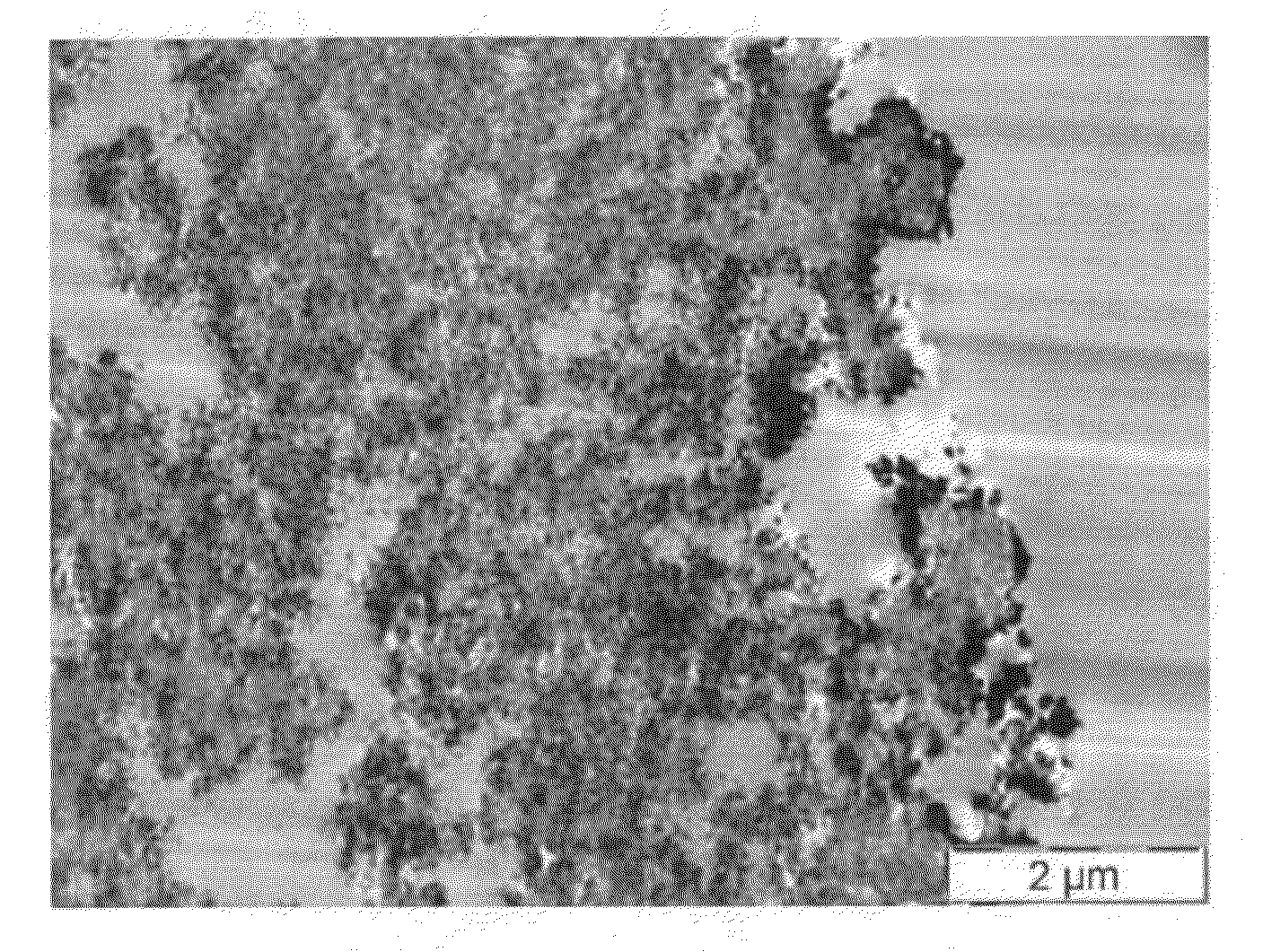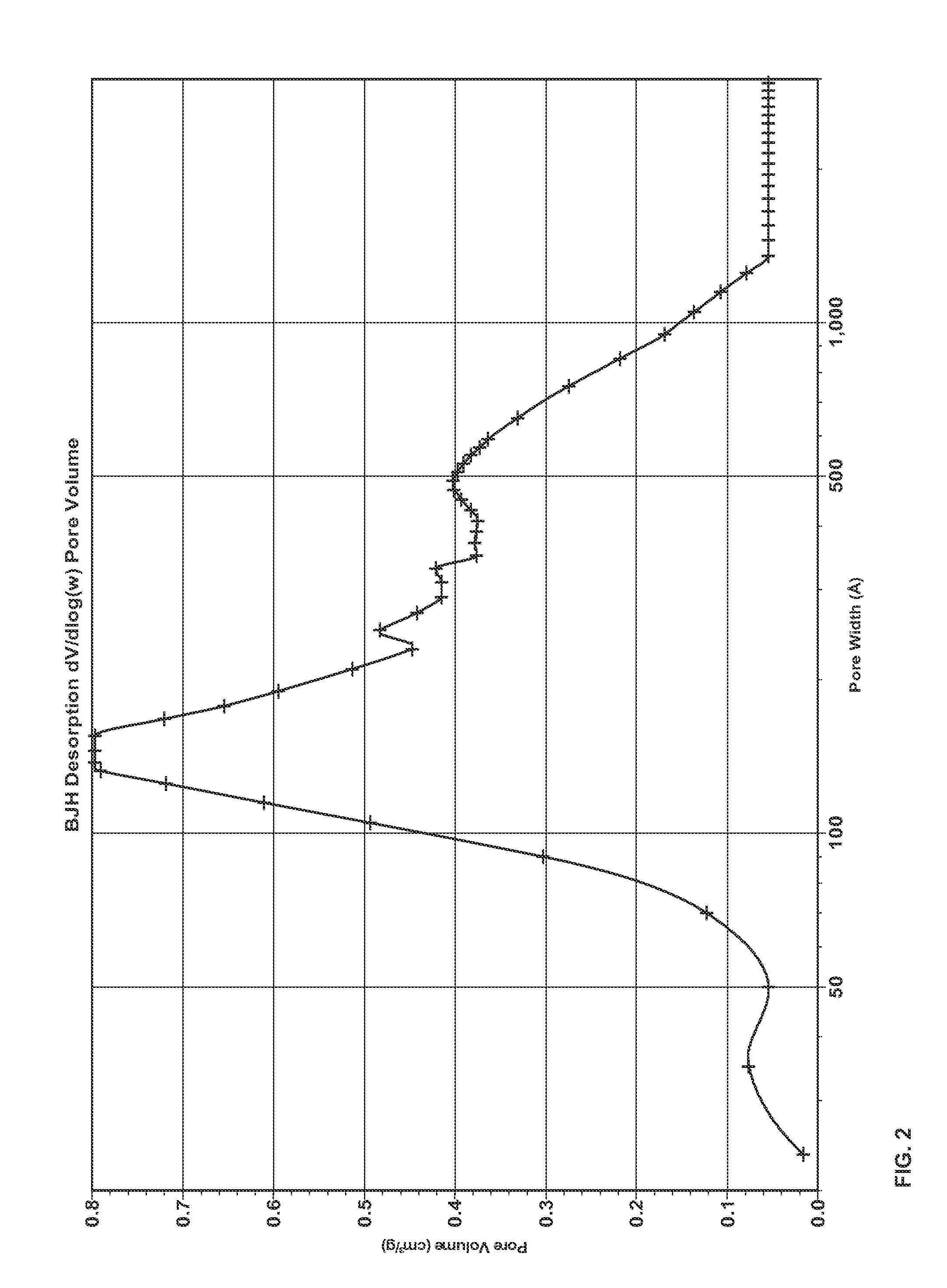Porous inorganic composite oxide
a composite oxide and inorganic technology, applied in the direction of catalyst activation/preparation, metal/metal-oxide/metal-hydroxide catalyst, heat treatment, etc., can solve the problems of reducing catalytic effectiveness and life, exhaust products of internal combustion engines, and known health hazards to human beings, animals and plants, so as to improve phase purity, improve thermal stability, and increase pore volume
- Summary
- Abstract
- Description
- Claims
- Application Information
AI Technical Summary
Benefits of technology
Problems solved by technology
Method used
Image
Examples
example 1
[0182]The composite oxide of Example 1 contained, based on 100 pbw of the composite oxide, 33 pbw Al2O3, 36 pbw CeO2, 27 pbw ZrO2, 1.8 pbw La2O3, 2 pbw Y2O3 and 0.2 pbw Pr6O11, and was made using the following precursors aqueous solutions: aluminum sulfate (concentration 8.3 wt % as Al2O3), cerium nitrate (26.9 wt % as CeO2), zirconium orthosulfate (17.2 wt % as ZrO2),
yttrium nitrate (13.9 wt % as Y2O3), and a solution containing a mixture of lanthanum nitrate and praseodymium nitrate (total oxide content 27 wt % as La2O3 and Pr6O11, with a ratio La2O3 / Pr6O11 of 90 / 10 by weight).
[0183]An acidic solution (Solution A) was made by mixing together all precursors solutions in proportions with respect to the final composition and a total oxide basis of 50 grams for the final material. The temperature in the reactor was maintained at 65° C. from the beginning of precipitation to the filtration. Some deionized water was added to a heated 1 liter reactor equipped with an agitation mobile. So...
example 2
[0188]The composite oxide of Example 2, contained, based on 100 pbw of the composite oxide, 50 pbw Al2O3, 28 pbw CeO2, 18 pbw ZrO2, 1.8 pbw La2O3, 2 pbw Y2O3 and 0.2 pbw Pr6O11, and was made according to the method described in Example 1.
example 3
[0189]The composite oxide of Example 3, contained, based on 100 pbw of the composite oxide, 50 pbw Al2O3, 28 pbw CeO2, 18 pbw ZrO2, 1.8 pbw La2O3, 2 pbw Y2O3 and 0.2 pbw Pr6O11 and was made according to the method described in Example 1, except that the precursors were split between two solutions, these two solutions being introduced simultaneously under agitation in the reactor. Solution A was made mixing together Aluminum sulfate and half of the total solution needed for lanthanum and praseodymium. Solution B was made mixing together cerium nitrate, zirconium orthosulfate, yttrium nitrate, half of the total solution needed for lanthanum and praseodymium and 52 g of water. Solution A and B were introduced simultaneously in the reactor together with sodium hydroxide.
PUM
| Property | Measurement | Unit |
|---|---|---|
| temperature | aaaaa | aaaaa |
| temperature | aaaaa | aaaaa |
| specific surface area | aaaaa | aaaaa |
Abstract
Description
Claims
Application Information
 Login to View More
Login to View More - R&D
- Intellectual Property
- Life Sciences
- Materials
- Tech Scout
- Unparalleled Data Quality
- Higher Quality Content
- 60% Fewer Hallucinations
Browse by: Latest US Patents, China's latest patents, Technical Efficacy Thesaurus, Application Domain, Technology Topic, Popular Technical Reports.
© 2025 PatSnap. All rights reserved.Legal|Privacy policy|Modern Slavery Act Transparency Statement|Sitemap|About US| Contact US: help@patsnap.com



